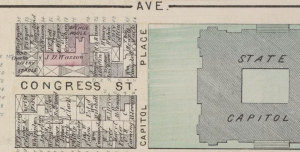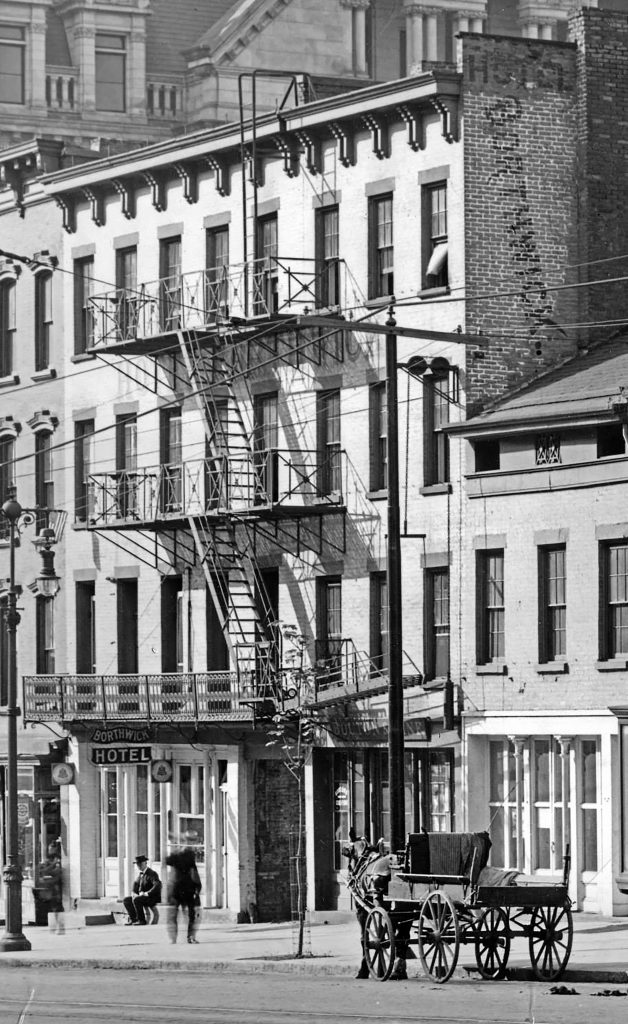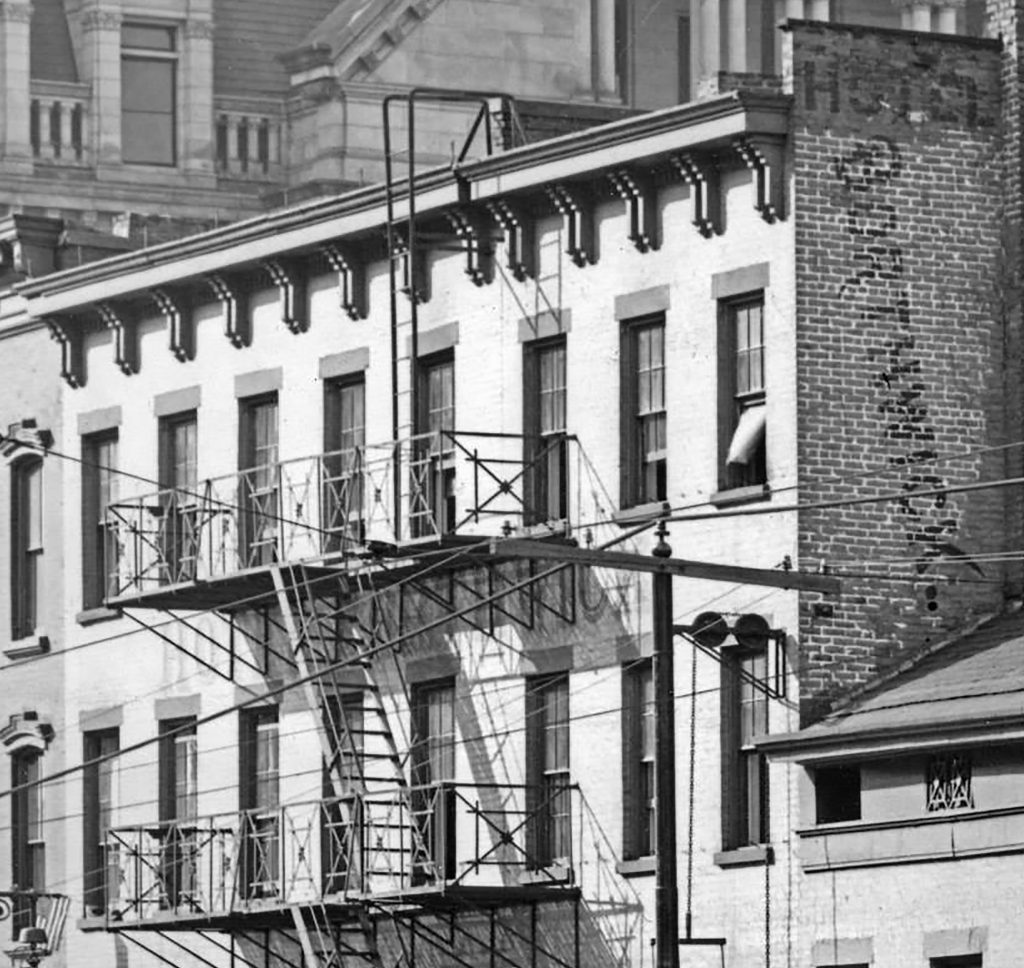This charming edifice (a combination of two buildings, if you look closely) is the Hotel Borthwick. Known in a previous life as the Avenue House, it was located just a bit west of the Capitol at 74 Washington Ave. We’re not quite sure when it was built, but as early as 1868 Avenue House was listed as a boarding house commonly used by minor officials of the Legislature, and it seems to have been a favorite of farmers from out of town.
In 1897, James M. Borthwick, who served as county clerk, had been the proprietor of the Kimball House, located nearly directly across the street. He decided to move across the street and “refitted what was formerly the Avenue house, nearly opposite, and opened it last night [7-1-1897]. It will be known as the Hotel Borthwick. Mr. Borthwick has spent a large amount of money in the endeavor to provide first rate accommodations at a minimum price. The house has been repainted and refurnished.”
Borthwick was a native of Broome in Schoharie County who started in the grocery business at South Berne, and then moved to Albany where he was in the grocery business as Russell & Borthwick. He served as an alderman and a founding member and director of the Albany County Fish and Game Club. Son Acton followed him as county clerk, and it’s possible that following James’s death in 1909, Acton kept up the grocery business (listed as a traveling salesman for a grocery business in 1910).
 Hotel Borthwick was said to cater to the rural clientele. It had an entryway into a courtyard of sorts, which apparently included some sizeable stables (the courtyard area shows on this 1876 map as property of J.D. Wasson). A 1938 remembrance of the neighborhood by one Nancy Van Dyck recalled “the old Hotel Borthwick with its wide drive and large back yard for the parking of the farmers’ rigs when they came to town.” This seems to have made it a favorite location for horse dealers, who regularly advertised that their horses would be available at the Borthwick, such as in an 1898 ad from W.H. Plank offering 30 head of horses direct from Canada, “consisting of matched pairs, single drivers, coach horses, knee actors, saddlers, family broke horses, draft horses and general purpose horses.”
Hotel Borthwick was said to cater to the rural clientele. It had an entryway into a courtyard of sorts, which apparently included some sizeable stables (the courtyard area shows on this 1876 map as property of J.D. Wasson). A 1938 remembrance of the neighborhood by one Nancy Van Dyck recalled “the old Hotel Borthwick with its wide drive and large back yard for the parking of the farmers’ rigs when they came to town.” This seems to have made it a favorite location for horse dealers, who regularly advertised that their horses would be available at the Borthwick, such as in an 1898 ad from W.H. Plank offering 30 head of horses direct from Canada, “consisting of matched pairs, single drivers, coach horses, knee actors, saddlers, family broke horses, draft horses and general purpose horses.”
In 1902, the hotel was offered to let: “Large hotel with ample yard and stable room; steam heat.” We haven’t determined if anyone took up the offer at that time. In 1904, James was still the proprietor, but James died in 1909, and beginning that year John H. Miller is listed as the proprietor, but the Hotel Borthwick name remained.
Is there a phrase for a “ghost sign” whose business is still a going concern? We’re not sure when this picture was taken, though we think it likely to have been 1917-18, so the paint on this sign couldn’t have been more than 20 years old but looked more like it had weathered a century. If you look carefully, you can also see the Hotel Borthwick sign on the front of the edifice, in the shadows of the fire escape.
We’re fascinated by the three people. The shaky man to the right is an example of what happened when subjects moved during the long exposures needed for photography at this time, even in bright daylight. Perhaps he has had his head turned by activity in the alley to the courtyard, just visible to the right. The gentleman on the stoop has been good enough to hold perfectly still for us. To his right, perhaps a woman, moving too quickly to be captured by the camera. The sign above says “Borthwick Hotel” though it appears to have always been titled “Hotel Borthwick.” The signs on either side announce that they were subscribers of the Bell Telephone system. In 1916, most businesses along this strip had telephone service, as did a few private individuals.
The storefront to the left of the Borthwick, the one with the key hanging in the door, appears to have been a barber (Henry B. Norris) and/or an electrician (A. Schimpf). Did one of them do locksmithing on the side? Not clear to us.
We’ll talk more about the fate of the Borthwick and its neighbors.
Photograph from the collection of the Albany Group Archive, which catalogs all the historic photos from the Albany…The Way It Was Facebook group.





Leave a Reply